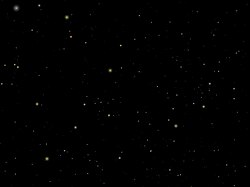| Display title | Astronomy:Willman 1 |
| Default sort key | Willman 1 |
| Page length (in bytes) | 6,245 |
| Namespace ID | 3024 |
| Namespace | Astronomy |
| Page ID | 37671 |
| Page content language | en - English |
| Page content model | wikitext |
| Indexing by robots | Allowed |
| Number of redirects to this page | 0 |
| Counted as a content page | Yes |
| Page image |  |
| HandWiki item ID | None |
| Edit | Allow all users (infinite) |
| Move | Allow all users (infinite) |
| Page creator | imported>Raymond Straus |
| Date of page creation | 06:07, 6 February 2024 |
| Latest editor | imported>Raymond Straus |
| Date of latest edit | 06:07, 6 February 2024 |
| Total number of edits | 1 |
| Recent number of edits (within past 90 days) | 0 |
| Recent number of distinct authors | 0 |
Description | Content |
Article description: (description)
This attribute controls the content of the description and og:description elements. | Willman 1 is an ultra low-luminosity dwarf galaxy or a star cluster. Willman 1 was discovered in 2004. It is named after Beth Willman of Haverford College, the lead author of a study based on the Sloan Digital Sky Survey data. The object is a satellite of the Milky Way, at ~120,000 light-years away. |
